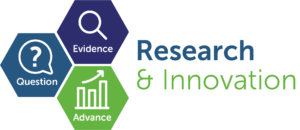Type of publication:
Conference abstract
Author(s):
*Kandaswamy L.; *Al-Salihi A.; *Singh P.K.; *Rangan S.; *Moulik P.K.
Citation:
Diabetic Medicine; Mar 2019; vol. 36 ; p. 174
Abstract:
Introduction: European Medicines Agency recognised diabetic ketoacidosis (DKA) as a rare and serious side effect of SGLT2 inhibitors (SGLT-2i). In six months, five cases of DKA in Type 2 diabetes on SGLT-2i were diagnosed at Royal Shrewsbury hospital. Case reports: Case 1: A 63 year old lady on metformin, dapagloflozin, gliclazide with HbA1c-102mmol/mol presented with nausea, vomiting and breathlessness was treated for DKA and pneumonia with pH 7.24, blood sugar-16mmol/l, bicarbonate-17 and ketones-3.6. Case 2: A 61 year old lady on liraglutide, gliclazide, canagliflozin with HbA1c 98mmol/mol presented with nausea, vomiting and polyuria had pH 6.9, blood sugar-16.4mmol/l, bicarbonate-<3 and ketones-5.4. Cases 3, 4 and 5: Patients established on insulin treatment with compliance issues (significantly reducing and missing insulin) had DKA. One of them had associated infection.
Discussion(s): Infection predisposed to DKA in two patients. Two patients had long duration of diabetes and poorly controlled glucose on maximum oral therapy indicating reduced beta cell reserve and three were already on insulin but reduced or missed the doses. All patients were treated according to DKA protocol and made full recovery, SGLT2i was stopped and insulin commenced in two of them and continued with others. Sick day rules emphasised.
Conclusion(s): SGLT2i lowers plasma glucose through glycosuria and promotes ketogenesis. Declining beta cell reserve with increasing duration of diabetes and relative insulin deficiency at the time of stress increases the risk of DKA. Patients on SGLT-2I should be educated of these risks particularly when they have a long duration of diabetes and are established in insulin therapy.
Link to full-text [NHS OpenAthens account required]


